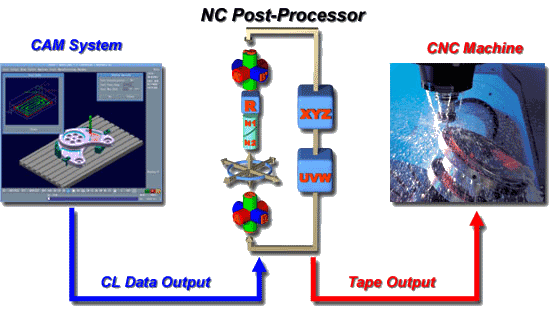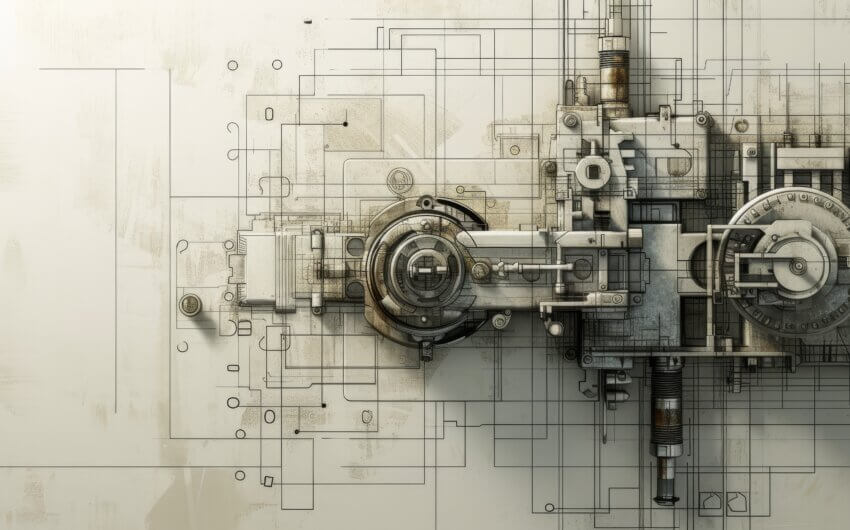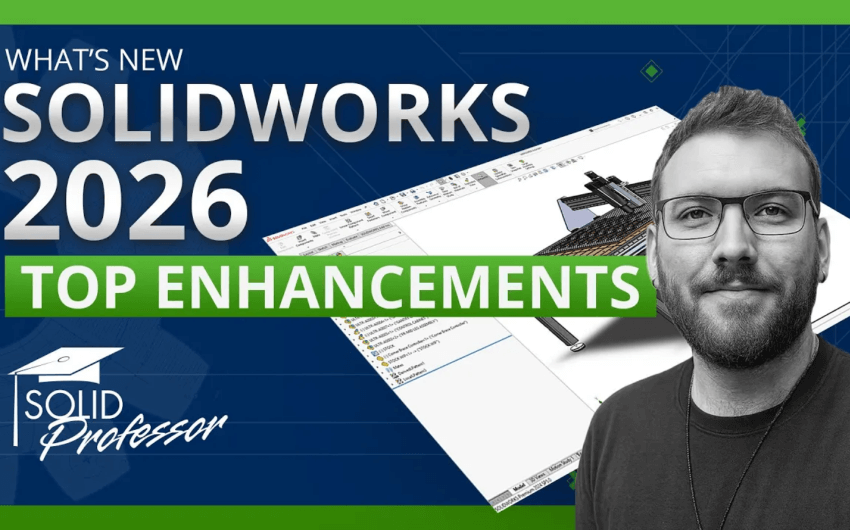Building a bridge between your CAM program and NC code
There’s a process to machining a CAD design, and it starts with importing that design into your CAM software of choice. Next, you pick a stock and plan and optimize the toolpaths of your CNC machine. Those toolpaths are going to turn a lump of material into your part. The only thing left to do is output the code for your machine to read. Sadly, a CNC machine can’t read the 3D modeled toolpaths you’ve meticulously crafted, so you’ll need to turn your CAM data into NC code, the language of CNC machines. Not every machine can read the same code though, so you’ll need to translate your CAM program in a specific manner depending on which CNC machine you’re using to manufacture your design. That’s where a post processor comes into play.
What’s a post processor?
In simple terms, a post processor is a professional translator. It translates the language of the CAM data into the language of the CNC machine. In technical terms, a post processor is a script that takes the 3D model data from a CAM program and converts it into NC code that a CNC machine can read. Unfortunately, not every machine can read the same NC code. The code that works flawlessly on one machine can be useless on another. There can be simple differences in the syntax the machine uses, more involved differences in setup parameters, or even differences with the machine language itself. Since each machine needs its own translation, each machine will need its own post processor. On the upside, you could manufacture the same part on three different machines by swapping out the post processor instead of changing your toolpaths or CAM program. You won’t need to dive in and manually make changes to suit the different machining environments as long as the post processor is doing its job.
The importance of a good post processor
A post processor that’s set up incorrectly will output errors that need to be manually corrected. While manual corrections to the NC code are possible, each edit introduces risk into the process. Manual NC code edits break the link between the CAM data and the finished code. While this may seem minor, the final code is doing the majority of the heavy lifting and can cause major issues if you need to re-output the code for changes to a toolpath. At that point, you’ll need to remember all the manual edits you made and add them back in to get the desired result across the rest of the part. You may be able to get away with one or two changes, but the more you massage the output code the harder it is to update in the future. Additionally, humans are not perfect, and at some point, there’ll be a mistake in the hand-edited NC code. Tracking down and fixing an error is difficult and can feel like an endless quest if you’ve fiddled with multiple aspects of the code. This problem is compounded if you don’t know where the mistake came from, causing you to spend time looking at the CAM program rather than the code itself to find the unknown error. You’ll be sitting on pins and needles the first time you run the program with the hand-edited code, and if it does crash the machine on the first outing, the stress only builds with every correction you have to make. Any time spent making these edits is time that could be spent on other projects or assignments. Even if you only spend a small amount of time editing each code, that adds up quickly over the course of weeks, months, and years. Investing in an exceptional post processor that will reliably output the right code will pay for itself over the machine’s lifetime.

How to obtain a good post processor
How do you get a good post processor? As mentioned earlier, each machine has its own “language” so you can’t just purchase a single post processor and tweak it to suit each machine. To get the most out of your CNC machines, you’ll want to invest in a unique post processor for each machine. I recommend working with the company that you bought your CNC machine from to choose a post processor that works with that machine and suits your specific manufacturing needs and workflows. A good post processor can be costly (as much as 3% of the machine’s cost for more specialty machines and workflows), but it will save you from a recurring headache caused by the errors of an inferior post processor. If you‘re not in contact with the company that sold you your machine, there are several 3rd party companies that develop custom post processors that can give you great results. Alternatively, you can create or edit your own post processors using programs like Universal Post Generator, by working directly with the source code. You’ll be able to make adjustments to different aspects of your post, customize it, and simply output a new set of post processor scripts to use with your CAM software. Eliminating manual NC code edits will speed up the CAM design to CNC machining process and simplify future iterations. No matter what path you choose to go down, it’s worthwhile to invest in a post processor.
























